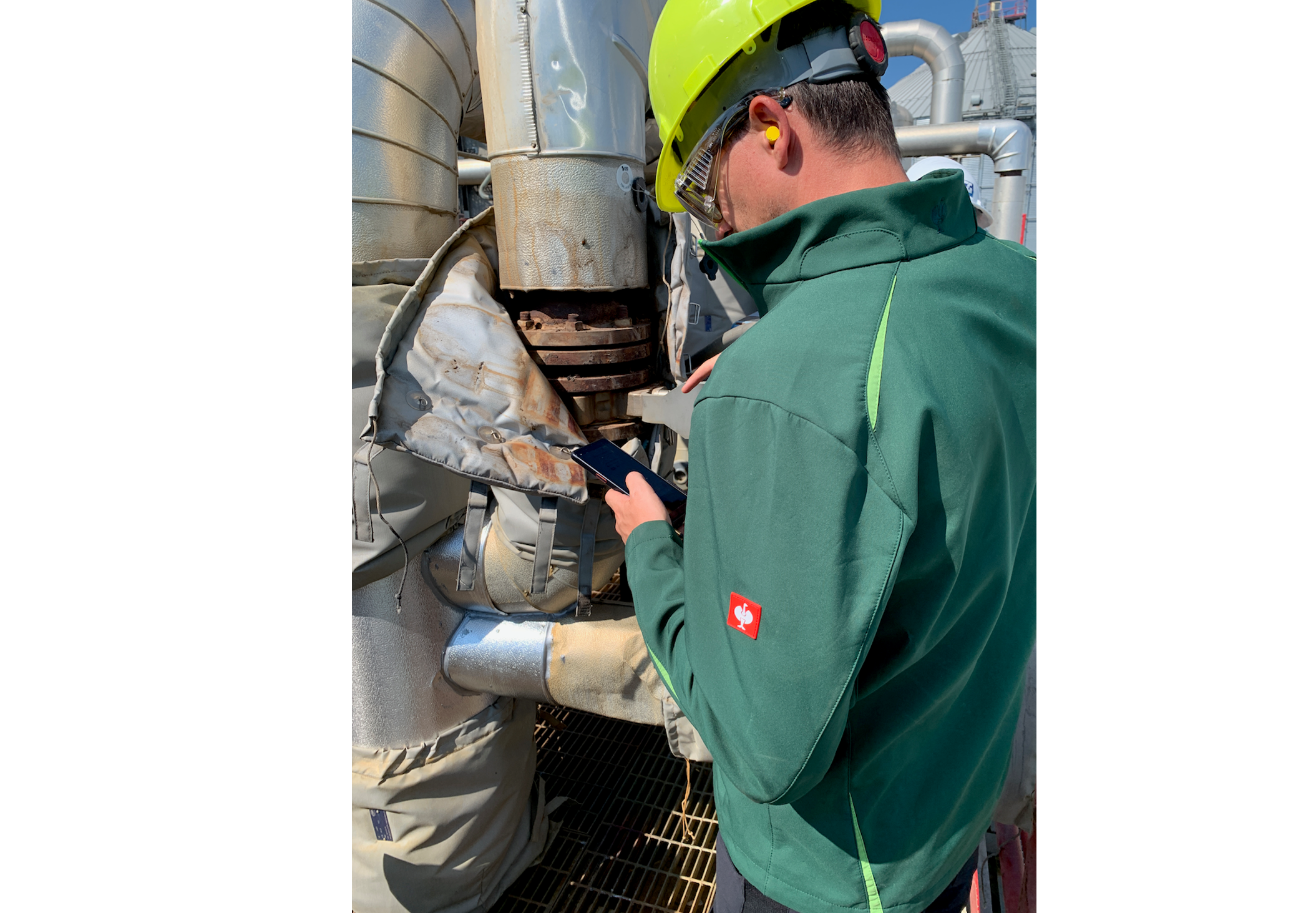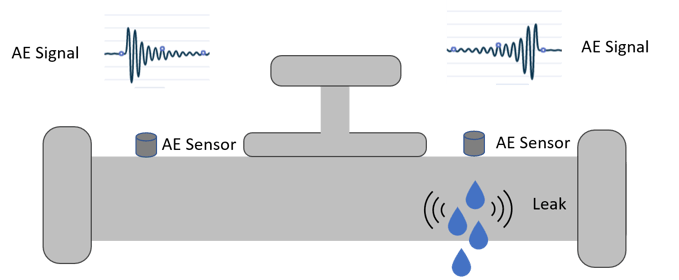
What is acoustic emission (testing)?
The application of acoustic emission (AE) testing has developed greatly over the last decades and is now established in many ISO and ASTM standards, in industrial applications, materials research, laboratory testing of components and as a non-destructive testing method for pressure vessels. It is a powerful method for screening, inspecting and monitoring the release of elastic stress waves that occur when a component or material undergoes smallest displacements in its internal structure e.g. crack initiation, crack propagation, corrosion processes or turbulent flows due to leakage. AE testing can be considered for many types of materials which are subject to a certain load during operation such as metal, ceramics, stone, concrete or composite materials.
Specific AE sensors convert the surface waves into electrical signals which can then be digitized, recorded and used for further analysis to assess the material’s condition and to locate defects.

When talking to customers, we often get the question: With a lot of ambient noise in our industrial plants, can you still detect acoustic emissions that are triggered, for example, by a leaky valve?
Horst Trattnig, CTO at Vallen Systeme GmbH, a company which is specialized in developing and manufacturing AE data acquisition systems and software, explains:
“Our AE sensors have the ability to catch smallest surface waves, convert them to an amplified analogue signal and digitize them in real time. The typical frequency range of AE sensors is between 20 kHz to 1 MHz, inaudible for humans and out of range for air borne sound microphones".

Noise in industrial environments is always there and can affect or cover the AE signatures, which is why it must be filtered out to reach reliable results. The first, and most important filter in the AE signal chain is the AE sensor. AE sensors have a non-linear sensitivity over frequency and are tailored to the dedicated application (e.g. valve leakage). Since mechanical noise and other source mechanisms usually occur in different frequency ranges, they have to be separated by setting additional digital frequency filters. Artificial intelligence can further support the filtering and classification process of different source mechanisms by continuous development of training data. This is why we are happy to have Senseven as a customer, a company which provides a standardized software guided solution for inspection based on AE and Senseven's machine learning approach. That solution does not only make the inspection process faster, easier and more cost effective but also increases their data quality of AE measurements and offers automated reporting.
And how does acoustic emission distinguish from other methods such as ultrasonic sound?
Acoustic emission and ultrasound are often thrown into the same pot. Both methods belong to the family of non-destructive testing methods and show an intersection of frequency ranges, but the test procedure differs significantly. While acoustic emission testing is a passive and integral test method to detect material defects (it covers 100 % of the structural integrity), the (active) ultrasonic method sends a pulse, at a single point, into the material under test and measures the reflected wave signal. Which method is more suitable depends on the use case and the conditions on site (e.g. screening or single point testing, access to machine(parts), ambient noise, type of machine component, etc.).
The application of acoustic emission as an NDT method has increased in recent years and is already applied to a variety of industries such as oil and gas, pharma and chemicals or construction.
Are you interested in how acoustic emission could make your inspection processes easier? We are happy to review your own use case with you.
Leave Your Comment Here